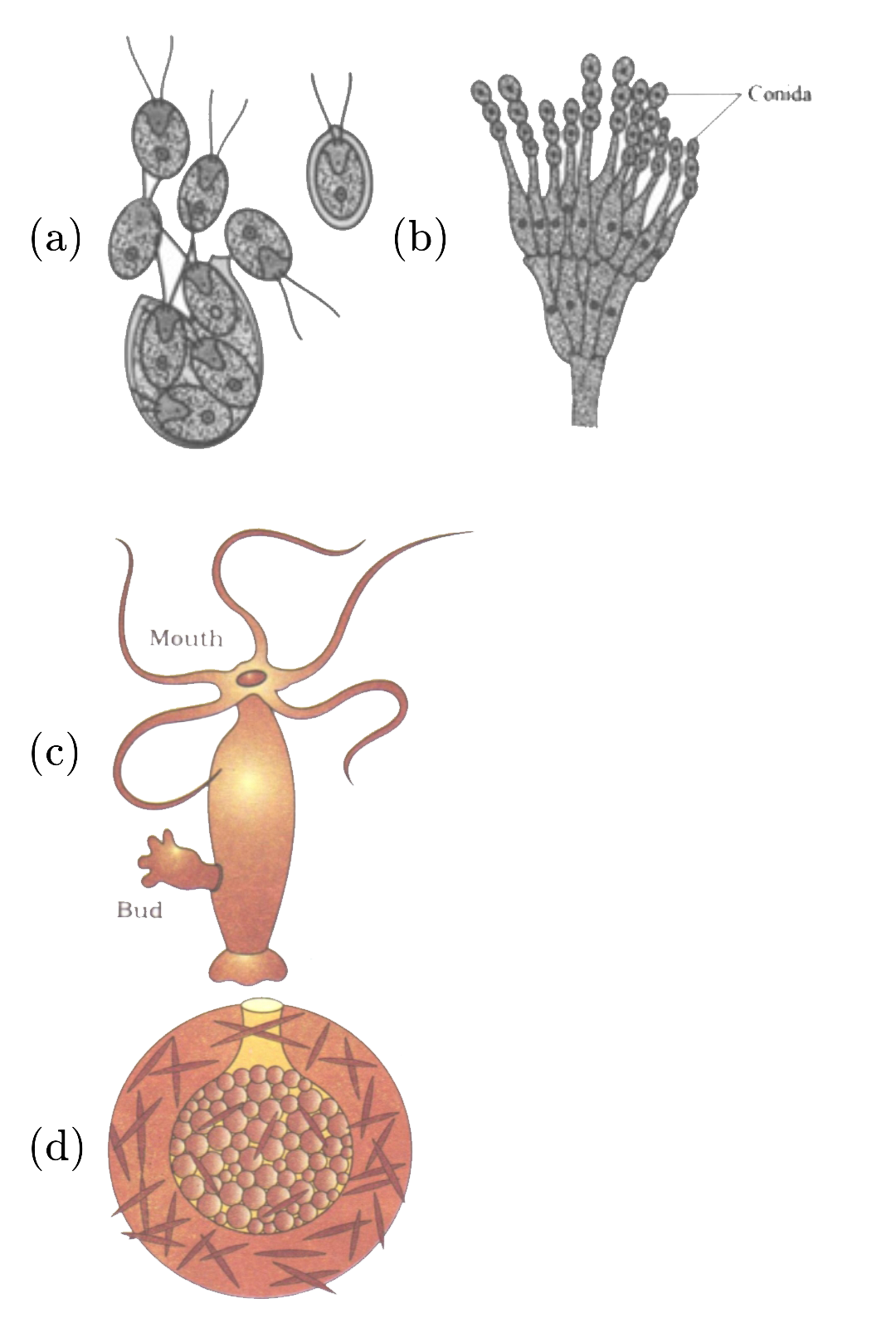During zoospore formation Chlamydomonas
Develops a very thick wall
Loses the chloroplast
Loses flagella
All the above.
The correct Answer is:C
Step-by-Step Text Solution:
1. Understanding Chlamydomonas: Chlamydomonas is a unicellular green alga that is known for its motility due to the presence of flagella. It reproduces asexually through the formation of zoospores.
2. Definition of Zoospores: Zoospores are motile asexual spores produced by Chlamydomonas. They are capable of swimming due to the flagella they possess.
3. Conditions for Zoospore Formation: Zoospores are formed under favorable environmental conditions. This is crucial for the survival and reproduction of the organism.
4. Process of Zoospore Formation: During the formation of zoospores, the Chlamydomonas undergoes a series of changes:
- The organism loses its flagella.
- The nucleus divides to form multiple zoospores.
- The cell wall of the Chlamydomonas ruptures to release the newly formed zoospores.
5. Outcome of Zoospore Formation: Once released, these zoospores can swim away and eventually germinate into new Chlamydomonas organisms, continuing the cycle of reproduction.
6. Identifying the Correct Option: Based on the process described, the correct answer to the question regarding what happens during zoospore formation in Chlamydomonas is that it loses its flagella.
Final Answer: During zoospore formation, Chlamydomonas loses its flagella.
---
- The organism loses its flagella.
- The nucleus divides to form multiple zoospores.
- The cell wall of the Chlamydomonas ruptures to release the newly formed zoospores.
Topper's Solved these Questions
- BOOK - DINESH PUBLICATION ENGLISHCHAPTER - KINGDOM PLANTAE OR METAPHYTA EXERCISE - CYG20videos
KINGDOM PLANTAE OR METAPHYTA
- BOOK - DINESH PUBLICATION ENGLISHCHAPTER - KINGDOM MONERA (THE PROKARYOTES)EXERCISE - CHECK YOUR GRASP20videos
KINGDOM MONERA (THE PROKARYOTES)
- BOOK - DINESH PUBLICATION ENGLISHCHAPTER - KINGDOM PROTISTA (UNICELLULAR EUKARYOTES)EXERCISE - CHECK YOUR GRASP19videos
KINGDOM PROTISTA (UNICELLULAR EUKARYOTES)
Similar Questions
Knowledge Check
- Question 1 - Select One
Study the following figures and select the correct statements regarding these.

(i)A shows mode of asexual reproduction in sponges through internal buds.
(ii)B shows sexual reprodction through zoospores in Chlamydomonas.
(iii) C shows asexual reproduction through fragmentation in Penicullium.
(iv) D shows external budding in Sycon.A(i) and (ii)BSmaller organisms always have shorter life span and vice versa.C(ii), (iii), and (iv)D(i) and (iv)
Select the correct statements regarding the figures given below

(i) (a) shows asexual reproduction through zoospores in Chlamydomonas.
(ii) (b) shows sexual reproduction through conidiophores in Peniciilium.
(iii) (c) shows buds in Hydra.
(iv) (d) shows gemmules in spongeView SolutionZoospores of chlamydomonas are
View SolutionZoospores are
View SolutionZoospores are
View SolutionChloroplast of Chlamydomonas is
View SolutionChlamydomonas shows
View SolutionSelect the correct pair(s) from the following
I. Zoospores - Chlamydomonas
II. Conidia - Penicillium
III. Gemmules - Sponge
IV. Buds - Hydra
Choose the correct codes.View Solution
